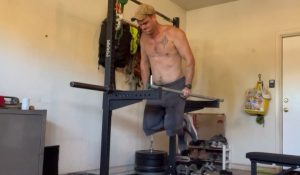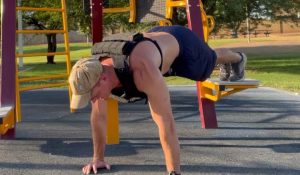There have been many times in my life (especially since I’ve had kids) that I’ve had to compromise with very short-burst, micro workouts. The trouble? Most people dismiss micro workouts.
Many people wrongly assume that these types of workouts are the ultimate compromise, only to be used when absolutely necessary. Over the last few years, I’ve found that this conclusion is wrong.
The key to making micro workouts effective is to utilize the same principles you’d use if you were designing a traditional workout program for the gym:
- Maintain a weekly volume of 10-20 work sets per movement pattern
- Maintain an optimal frequency of at least 2x per week per movement pattern
- Dial in your recovery methods by eating and sleeping to support your goals
If you’re familiar with traditional lifting programs, these guiding principles will sound like nothing new, and that’s the point. The key is to find extremely time-efficient methods of accomplishing the same thing you would in the gym.
What exactly is a micro workout?
Discussions on micro workouts are often complicated by the fact that the term “micro workout” is loosely defined.
For our purposes, the term “micro workout” will be applied to short mini-bouts of exercise lasting anywhere from 3-10 minutes. These can include anything from antagonistic supersets or circuits of traditional resistance training exercises to Tabata-style cardio.
They are usually intended to be done daily or multiple times throughout the day.
So, are micro workouts actually effective?
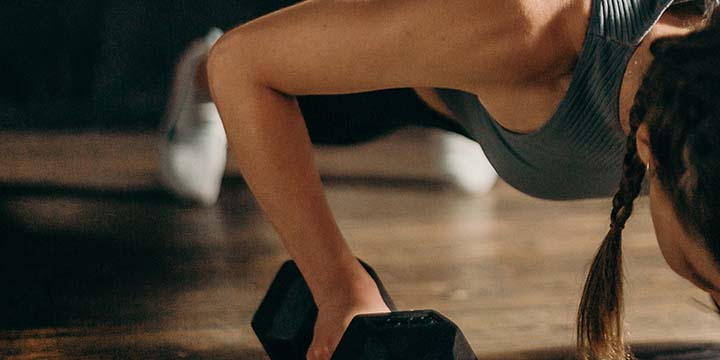
Studies have shown that micro workouts throughout the day are an effective alternative to traditional exercise. One 2018 study of daily 6-minute micro-sessions showed improvements in functional strength of 7.8-20.9% over 4 weeks.
This 2013 article in ACSM’s Health & Fitness Journal noted that: “HICT seems to be an efficient means of exercise to help decrease body fat, improve insulin sensitivity, and improve V˙O2max and muscular fitness.”
The key to making them effective is to utilize extremely time-efficient methods of following the proven principles of exercise.
Benefits of micro workouts
If we’re following evidence-based principles for weekly volumes, intensity, and frequency, we can expect micro workouts to produce very similar results to basic resistance training using calisthenics, resistance bands, or dumbbells.
What’s more, micro workouts have the advantage of making a regular exercise routine extremely accessible to those who struggle to find time for fitness. By picking simple, accessible exercises, like dips and pull ups, we save time and make it possible to do our workouts virtually anywhere.
They are best used by people who want to reap the rewards of being in shape with minimal time and effort; for this goal, they are a near-perfect solution.
Of course, the “effectiveness” of a given protocol will vary based on the individual’s goal. As noted in our “limitations” section below, if your goal is to compete in a bodybuilding show, then micro-workouts are unlikely to get you there.
Micro Workout Examples
The sample workouts below reflect a method of designing micro workouts that I’ve used on myself and given to others many times. You can use them as written, or you can design your own – rest assured that if you follow the basic, proven principles of exercise, you’ll accomplish roughly the same result that you could expect from traditional workouts.
Upper body micro workout (3-4 minutes)
Where the upper body is concerned, one single exercise won’t cut it. While the basic pushup or parallel bar dip is a fantastic exercise for building the chest and triceps, it leaves out the upper back, biceps, forearms, etc. So, in order to cover the upper body, we’re going to need to utilize a compound pressing exercise and a compound pulling exercise of some sort. Here’s one of my favorites:
- Pick two exercises, a push and a pull. Make them accessible with minimal equipment. My favorites would be a push up variation and a seated resistance band row.
- Determine your “rep max” for each exercise (while maintaining good form). Divide that number by 3 to determine what your “training set” number will be. Note: you will likely need to test your maxes in advance of starting a program.
- Complete 4 training rounds of each exercise, back-to-back, with no breaks. On the last set, perform an AMRAP set (as many reps as possible).
- Repeat 3-5 times per week.
- Every 2 weeks, re-test your maxes and adjust your “training set” numbers accordingly.
I’ve used this method a lot in my own training, and I’ve suggested it to others. The whole thing should take around 3 minutes.
Lower body micro workout (3-4 minutes)
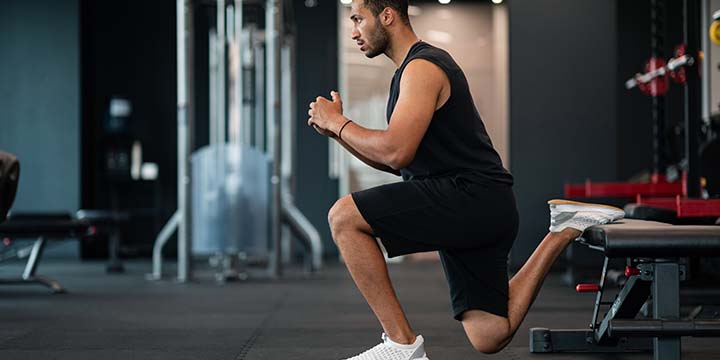
The lower body is a bit trickier, since the muscles are much larger and stronger. The key here is to utilize unilateral (single-leg) variations of popular exercises. Don’t worry, we’re not going to be doing any party-trick exercises. Just proven, straightforward resistance training staples:
- Pick a single-leg, knee dominant squat variation, and a hip dominant exercise. My personal favorites would be the Bulgarian split squat and resistance band deadlift (band under feet, ends in hands).
- Determine the max number of reps you can do in 2 minutes on each exercise. Stop when the time is up or if your form breaks down. Divide that number by 3 to determine your “training set” number.
- During your workouts, complete 4 rounds of training sets, and on the last set, complete AMRAP in 1 minute.
- Repeat 2-4 times per week.
- Every 2 weeks, re-test your maxes and adjust your “training set” numbers accordingly.
I’ve included time limits here because the muscles of the legs are strong. It’s unlikely that you’ll hit true muscular failure in the hamstrings, glutes, and quads on these exercises like you would if you were completing a 5RM on a barbell back squat.
Core micro workout (3-6 minutes)
My favorite way to design a micro workout for the core involves planks. I am aware that the humble plank gets a lot of flak online. It seems to me that most people who disparage planks don’t really understand how to maintain tension in the midsection during the exercise. I’ve found that planks, when done properly, are capable of producing an iron clad, strong, pain-free midsection in almost everybody. Try this:
- 1 min plank
- 1 min side plank
- 1 min side plank (switch sides)
Repeat this circuit for up to 3 rounds, if you’ve got the guts. Most people will have trouble getting through 2 rounds of this without a break (or losing tension). Some will struggle with one round. That is perfectly OK.
Cardio micro workout (4 minutes)
There’s no sense in re-inventing the wheel here. Most of us are aware that high intensity interval training (HIIT) is one of the best ways to shorten a cardiovascular workout while maintaining the positive effect we’d get from cardio.
But is it possible to get a training effect in 3-5 minutes? If you’ve never tried Tabata before, prepare to be humbled:
- Pick your cardiovascular endurance exercise of choice: sprints, burpee and pull-up supersets, double unders (jump rope), whatever you want.
- Perform 20 seconds of the exercise in “sprint” fashion – full effort
- Rest 10 seconds
- Repeat 8 times (for a total of 4 minutes)
Four minutes doesn’t seem like a long time before you try your first Tabata workout. Pro tip: leave this one for after or before work. You will be sweaty when it’s over. You have been warned!
Planning and programming micro workouts
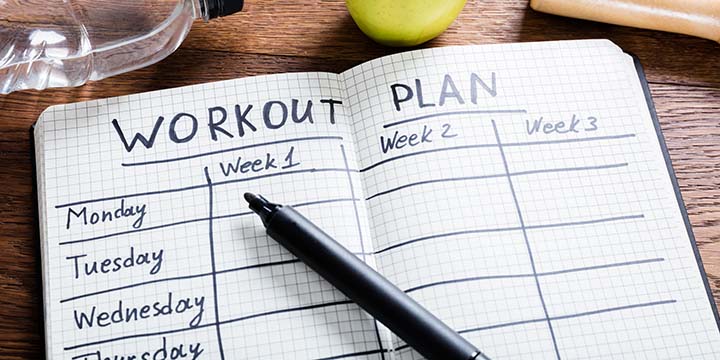
The utility of a micro workout program is that they are extremely time efficient. That being said, you still need a plan. This is where most people get it wrong. Working out willy-nilly is never the answer.
Here are a couple of ways you could structure a weekly program around micro workouts:
Option 1: Micro Workouts Throughout the Day
| AM (before work) | PM (after work) | PM (before bed) | |
| M | Upper body | Lower body | Core |
| T | Upper body | Lower body | Core |
| W | Tabata | – | – |
| Th | Upper body | Lower body | Core |
| F | Upper body | Lower body | Core |
| Sa | Tabata | – | – |
| Su | – | – | – |
This may be my favorite option. Considering that all of the above workouts last 3-6 minutes, you can sneak an entire exercise program into your week with very little time commitment this way.
Option 2: Combining Micro Workouts
| AM (before work) | PM (after work) | PM (before bed) | |
| M | Upper / lower | Lower body | Core |
| T | Upper / lower | Lower body | Core |
| W | Tabata / core | – | – |
| Th | Upper / lower | Lower body | Core |
| F | Upper / lower | Lower body | Core |
| Sa | Tabata / core | – | – |
| Su | – | – | – |
This option has you performing a 7-10 minute workout every morning, 6 days per week. Of course, you don’t have to do it in the morning – you could just as easily squeeze it in after work or after the kids go to bed.
The limitations of micro workouts
I’m well aware that I’ve talked up micro workouts quite a bit in this article. I’d be remiss if I didn’t at least mention the drawbacks:
If your goal is to have the ultimate physique, micro workouts probably aren’t for you.
The most obvious drawbacks are likely the fact that you won’t be maximizing anything, necessarily. While compound exercises done close to failure two or more times per week are great for general hypertrophy, you’re going to want to add some isolation exercises if maximal hypertrophy is your goal.
If your goal is to be as strong as possible, micro workouts probably aren’t for you.
Similarly, for strength goals, micro workouts will fall short. That is to say, if your goal is to bench 315, you’ll have to go to a gym and strength train under a barbell at some point.
If distance-running or endurance is your goal, micro workouts likely won’t get you there.
If you want to set a new 10K PR, you’ll likely need to participate in true 10K training. One caveat is that if you’re struggling to find time for resistance training as a distance runner, micro workouts can be an excellent option for you to squeeze some resistance training into your busy schedule.
Time to get working!
If you struggle to find the time to work out or you simply aren’t interested in becoming a gym rat, 3-5 minute micro workouts throughout the day may be the perfect option for you. Now that there are no more excuses, time to get working!













